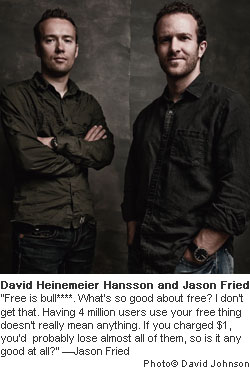Ken Burn’s documentary on Frank Lloyd Wright shows Wright did the actual drawings for the famous Falling Water house in less than three hours! [via TSY]
Related:
Picasso, Paula Scher, and the lifetime behind every second [SvN]
You’re reading Signal v. Noise, a publication about the web by Basecamp since 1999. Happy !

Now: The creator of Vooza, "the Spinal Tap of startups." Previously: Employee #1 at 37signals and co-author of the books Rework and Getting Real.
I have seen so many young entrepreneurs and intelligent, experienced engineers come through the door with “great products that will change the way people and businesses function” and most of them fail. They fail because the mentality towards what a business should be and how it should be run is different now. Years ago when you opened a business you had fixed costs and you hustled each month to cover bills and grow so that you could do more than just cover bills soon. Technology is not an industry, in my opinion, it is a tool that is used to make an industry more efficient and effective… now I know this means that the production of these tools is an industry, but how many companies today really create tools and how many create cool crap that is dead in 6 months?
Investors use terms like “sexy” and “viral” and 22 year old CEOs use buzz terms like scalable, robust and enterprise but there is no meat to anything anyone is saying. No one asks “how do you make money, how quickly, how much, what are your CPCA…” oh and 22 and you are a CEO… really… get over yourself…
The illusion of success, the delusion of being the next Zuckerberg… are we fostering great minds or setting the next generation up for failure and disappointment?
We’re excited to announce the very first 37signals podcast is now available! More to come soon…
Episode #1 (17:22, download MP3)
Like this episode? Please share it with your friends:
In this episode: Jason discusses his new CEO office hours and the most surprising call he’s received so far. David takes us behind the scenes of Haystack, the recently launched 37signals site that brings together web designers and clients. The discussion touches on why the site was created, how it works, and changes made to initial feedback. Then Jason discusses how nature can make you a better designer.
More details and related links at 37signals.com/podcast. Subscribe to the podcast via iTunes or RSS.
Kelly Flatley and Brendan Synnott were two high school friends who wanted to sell their homemade nutty granola. So they launched Bear Naked in 2002. Here’s the story of how they landed their first big account:
Our first big retail break was landing an account with Stew Leonard’s, the four-store Connecticut grocery chain. For months we bugged the buyer via phone. He ignored us. To get his attention, we decided to bring him breakfast one day.
We woke up at 6 a.m. and dressed in Bear Naked T-shirts. We borrowed china from Kelly’s mom, which we used to display fresh fruit, our granola, and Stew Leonard’s brand of yogurt. We were the first car in the lot at the chain’s headquarters. After we climbed the stairs to the office, the receptionist told us the buyer was on vacation. We were deflated!
But then, as we were walking away, we recognized Stew Leonard Jr. “Stew!” we yelled. “We brought you breakfast!”
He seemed impressed by our youth and enthusiasm and asked us into his office. He said he was used to brokers pitching 55 products at a time and that it was refreshing to meet young kids so eager to sell a bag of granola. After talking with us for two hours, he said he wanted to help us out. He decided to place our granola in his stores.
The article provides good inspiration for how you have to DIY it starting out. For the first few years, the duo ran the company out of Kelly’s parents’ home, bought ingredients at CostCo when distributors wouldn’t fill their undersized orders, crashed triathlons to give out samples, and worked as the company’s distributors, producers, and kitchen cleaners.
Related: Do it yourself first [SvN]
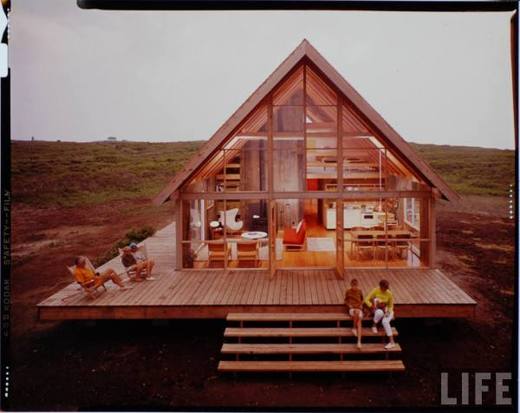
Danish designer Jens Risom, who designed the first-ever Knoll chair, built a gorgeous weekend getaway home that was profiled years ago in Life Magazine. Check out the shots of the interior too (starts halfway down at linked page).
Q: Do you need a $10,000 camera system to shoot like a pro? A: No, I don’t think you do. A camera is essentially a tool, just like a hammer. You can take pictures whether it’s just a simple point-and-shoot or a serious professional camera. It’s just a matter of knowing what to shoot, when to shoot and how to shoot it…Having better equipment can give you better control over how to take the photo, but I don’t think it necessarily makes you a better photographer. Someone who’s a good photographer can take a photo with their telephone nearly as good as they could with a professional camera.
The US cover of Freakonomics is a play on the old “comparing apples to oranges” phrase:
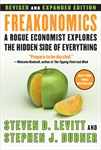
Well, it looks like comparing apples and oranges is a strange concept in many places. Check out the different analogies used on the cover (green egg yolks, banana corn, three headed scissors, etc.) from editions in foreign countries:


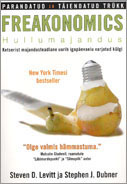
(L to R: Chinese, Denmark, Estonia)

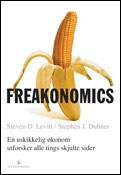

(L to R: Indonesia, Norway, Hungary)
Target people who have never used a product like yours before. (It’s what Clayton Christensen calls “competing against nonconsumption.”) These people don’t know a solution exists or the ones they’ve tried were too expensive or confusing. These folks aren’t picky (yet). They just want something simple that works.
That means you can win by creating something that’s good enough to meet these basic needs. There’s always more customers on the low/simple end than the high/expensive end. (The low/simple end may not demo as well to the press at a trade show, but it’s what a ton of people actually want.)
Three examples:
1. Nintendo goes after people who aren’t using other video game systems. While Xbox 360 and Sony one-up each other trying to reach experienced, demanding gamers, Nintendo goes after newbies. The Wii’s controller makes video games so simple that a three year-old can play it. And the company is thriving because of it.
2. The Jitterbug is a cell phone created for senior citizens and others who find traditional cell phones too complicated. While fancier phones offer tons of features and apps, the Jitterbug stays simple and focuses on what its demographic cares about. The phone has a large screen and keypad, offers a landline-like dial tone, has an extra powerful speaker, is hearing-aid compatible, and there are no contracts involved.
3. Nearly half of all undergraduate students in the US now attend community college. Why? They are more affordable, have more lenient admission standards, offer online degrees, and focus on market-driven degrees aimed at nurses, firefighters, law enforcement officers, and EMTs. All that means they are able to enroll students who otherwise might never wind up in a classroom.
If you build a simpler, more affordable alternative to what’s out there already, you can bring new people into the fold. You don’t have to grab a piece of someone else’s pie — just bake a new one.
Related: How Obama targets nonconsumption [SvN]
A couple of recent 37signals mentions at Entrepreneur Magazine re: charging for products…
Harness the Power of ‘Freemium’
As for when a web service should start charging, Fried’s answer is simple: immediately. Charging from the outset tells users that the product has a specific value, Fried says. Trying to charge for something that was previously free can undermine the product’s value, causing potential customers to ask why the service is suddenly worth more than it was in the past.
“My feeling is that you should begin charging right from the start…The longer something is free, the less it’s worth,” he says…
“The best advice I can give regarding pricing is this: Have a price. Don’t be afraid to charge for your work. And make it a number you’d pay yourself,” he says.
“You pay for everything in your life except some of the stuff on the internet,” Fried says. “That’s the built-in human behavior we’d like to mimic. The problem with this free thing is, if you’re going to hook people on free for four years, and all of a sudden start charging for things, that doesn’t work very well.”
Entrepreneurs are getting the wrong message from the Klondike buyout of YouTube and the “ridiculous” valuation of Facebook, [the founders of 37signals] say, pointing out both companies are still hemorrhaging cash and haven’t figured out a way to make money. Free is a bubble that will burst when investors run out of patience.
“I’ve been talking to startups, and people have this notion that all they need is eyeballs, all they need is a lot of users and then something magical will happen, and then they’re going to be a huge success,” says Heinemeier Hansson. “That’s going to lead to a lot of unavoidable failures.”…
“The answer,” Fried says, “is to be fair on prices, deliver great services that your competitor can’t and simply outlast free.”
